Taking a train equipped with no air-conditioning while the sun blazes on a hot Taiwanese autumn day might not sound like a pleasant trip to most, but one might be surprised.
A restored “blue train” on Saturday returned to northern Taiwan for the first time since the trains — which were named after the iconic “romantic blue” paint used for the train cars — were replaced decades ago by trains with air-conditioning.
The blue train was the “most high-end” train at the time, and people could reserve seats in advance — a rare luxury for the average person or the second-best choice for the elite when they could not get a ticket on an air-conditioned train, said Chu Sheng-lung (朱聖隆), a train expert.
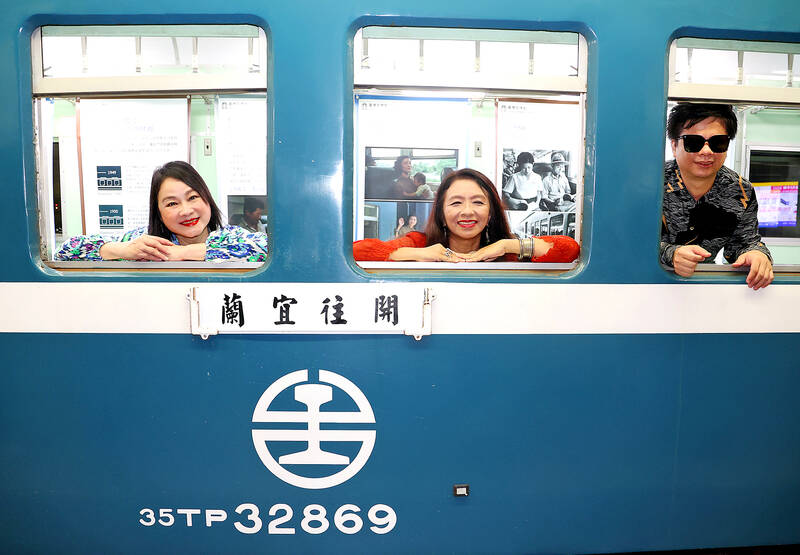
Photo: CNA
The blue train now regularly runs along the South Link Line between Pingtung County’s Fangliao Township (枋寮) and Taitung, and is known as the Breezy Blue tourism train.
The five-car train traveled from the Taiwan Railways Administration’s (TRA) railway workshop in Pingtung County’s Chaojhou Township (潮州) to Taipei’s Nangang (南港) Railway Station to offer limited tours between Nangang and Yilan Railway Station for nine days starting on Saturday.
The tour was organized by the TRA, the Preparatory Office of National Railway Museum and Lion Travel Service Co as a warm-up event to the Creative Expo Taiwan, which is to run from Friday next week to Oct. 1.
Actress Lu Hsiao-fen (陸小芬) and singer Christine Hsu (許景淳) were invited on the first trip on Saturday. Lu and a blue train both “starred” in the 1983 movie A Flower in a Rainy Night (看海的日子) and Hsu produced the music for the 1986 movie Dust in the Wind (戀戀風塵), which contained scenes shot on a blue train.
TRAVELING IN TIME
After boarding the train, passengers immediately found themselves transported to the 1980s with manual doors, green rotating seats and vintage ceiling fans.
The windows, which can be opened, were the most notable feature, not only because no other trains in Taiwan have openable windows, but also because the open windows made the trip more memorable and enjoyable.
Imagine going for a drive with the windows down and your full attention on the scenery outside without worrying about the traffic or having to stop at traffic lights — that was what it felt like on the blue train. One could hear the swoosh of the wind, the clack-clack of the wheels on the train tracks, the choo-choo of the horns used by the driver as a greeting or warning, but no amount of onomatopoeia could fully bring the experience to life.
The temperature was distinctively different under the sun and in the tunnels, the smells changed when the ocean drew near, and without air-conditioning, passengers’ senses were met with constant surprises that are usually absent from modern trains.
The train slowed down between Dali (大里) Railway Station and Shihcheng (石城) Railway Station from about 70kph to 40kph for passengers to take in the scenery and breeze from the Pacific Ocean.
FOOD
Of course, an outing by train would not be complete without a boxed lunch. The one designed aspecially for the tour came in blue boxes to match the blue train.
The boxed lunch features “cherry ducks” (宜蘭櫻桃鴨) from Yilan and Shaohsing wine chicken thighs, which are popular dishes first launched by the TRA’s Catering Service Center in Keelung’s Qidu District (七堵) and the Taipei Railway Restaurant respectively, the TRA said.
Many train buffs waited on station platforms, on top of hills and near the river along the way for a rare view of the blue train. The passengers waved at them enthusiastically.
Office director Cheng Ming-chang (鄭銘彰) said that there are no plans for the blue train to continue the service on a regular basis in northern Taiwan, but feedback could motivate the TRA to organize more trips.
As one of the five main venues that the 10-day Creative Expo Taiwan is centered around this year, the office would be hosting other activities, the Ministry of Culture said.
Visitors could take a short ride on the restored DR2300 diesel rail car — another blue train model — and blue train boxed lunches would be on sale at the office, the ministry said.
MUSEUM PREVIEW
The Creative Expo would be a “micro-unboxing” of the National Railway Museum at the old site of the Taipei Railway Workshop, a designated national monument, it said.
The office was launched in 2019, and began transforming the workshop into the museum, which is scheduled to be opened to the public in stages until its completion in 2027, the ministry said.
The workshop’s forging factory, passenger train factory, main office and bathhouse would be open to visitors only during the Creative Expo, it said.
The museum is not a museum for train buffs alone, as it invites people from all walks of life to learn about trains and Taiwan’s railway history from angles they might be interested in, such as literature and movies, Cheng said.
Just like the blue train tour, the restoration could bring back memories for some while creating new memories for others, he said.
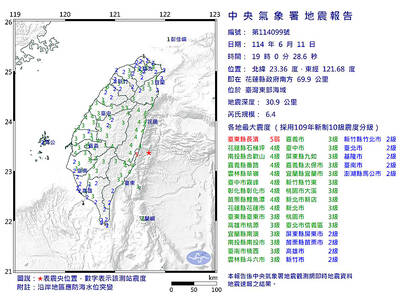
A magnitude 6.4 earthquake struck off the coast of Hualien County in eastern Taiwan at 7pm yesterday, the Central Weather Administration (CWA) said. The epicenter of the temblor was at sea, about 69.9km south of Hualien County Hall, at a depth of 30.9km, it said. There were no immediate reports of damage resulting from the quake. The earthquake’s intensity, which gauges the actual effect of a temblor, was highest in Taitung County’s Changbin Township (長濱), where it measured 5 on Taiwan’s seven-tier intensity scale. The quake also measured an intensity of 4 in Hualien, Nantou, Chiayi, Yunlin, Changhua and Miaoli counties, as well as
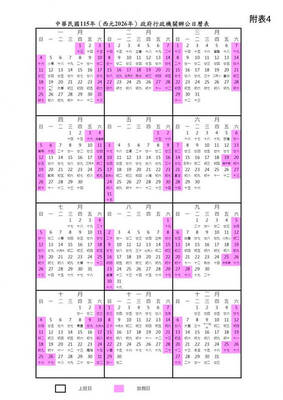
Taiwan is to have nine extended holidays next year, led by a nine-day Lunar New Year break, the Cabinet announced yesterday. The nine-day Lunar New Year holiday next year matches the length of this year’s holiday, which featured six extended holidays. The increase in extended holidays is due to the Act on the Implementation of Commemorative and Festival Holidays (紀念日及節日實施條例), which was passed early last month with support from the opposition Chinese Nationalist Party (KMT) and Taiwan People’s Party. Under the new act, the day before Lunar New Year’s Eve is also a national holiday, and Labor Day would no longer be limited
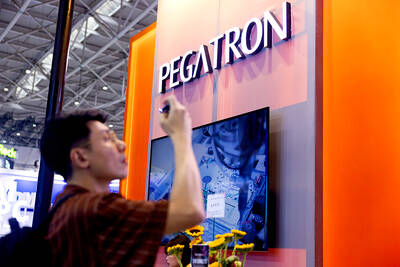
COMMITMENTS: The company had a relatively low renewable ratio at 56 percent and did not have any goal to achieve 100 percent renewable energy, the report said Pegatron Corp ranked the lowest among five major final assembly suppliers in progressing toward Apple Inc’s commitment to be 100 percent carbon neutral by 2030, a Greenpeace East Asia report said yesterday. While Apple has set the goal of using 100 percent renewable energy across its entire business, supply chain and product lifecycle by 2030, carbon emissions from electronics manufacturing are rising globally due to increased energy consumption, it said. Given that carbon emissions from its supply chain accounted for more than half of its total emissions last year, Greenpeace East Asia evaluated the green transition performance of Apple’s five largest final
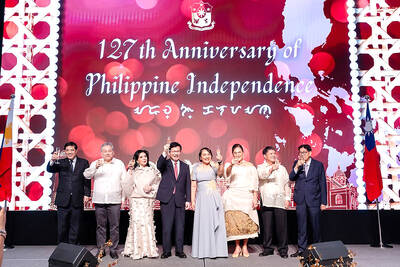
Taiwan is to extend its visa-waiver program for Philippine passport holders for another year, starting on Aug. 1, Minister of Foreign Affairs Lin Chia-lung (林佳龍) said on Friday. Lin made the announcement during a reception in Taipei marking the 127th anniversary of Philippine independence and the 50th anniversary of the establishment of the Manila Economic and Cultural Office (MECO) in Taiwan, the Ministry of Foreign Affairs said. The decision reflected Taiwan’s commitment to deepening exchanges with the Philippines, the statement cited Lin as saying, adding that it was a key partner under the New Southbound Policy launched in 2016. Lin also expressed hope